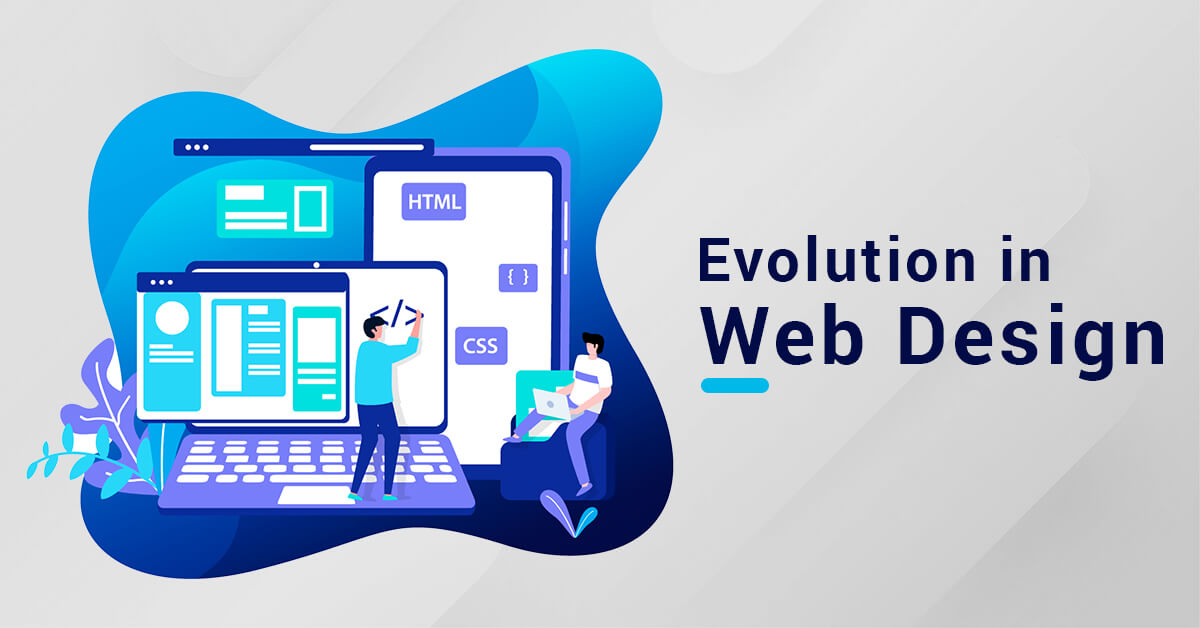The Evolution of Web Design: From Simplicity to Innovation
Web design has come a long way since the early days of the Internet. What started as basic HTML pages with simple text and images has evolved into a dynamic and sophisticated field of design and user experience. Let’s take a journey through the evolution of web design to understand how it has transformed over the years.

The Dawn of the Web
In the 1990s, the internet was in its infancy, and web design was rudimentary. Websites were primarily text-based, with minimal formatting and basic navigation. Colors were limited, and images were sparse due to slow internet connections. The focus was on sharing information rather than aesthetics or user experience.
Rise of HTML and Tables
As the internet grew in popularity, HTML (Hypertext Markup Language) became the standard for web development. Tables were commonly used for layout, leading to more structured web pages. This era saw the introduction of simple graphics, animated GIFs, and basic hyperlink navigation.
The CSS Revolution
The early 2000s marked a significant shift in web design with the widespread adoption of Cascading Style Sheets (CSS). CSS allowed designers to separate content from presentation, making websites more accessible, flexible, and visually appealing. This era witnessed the rise of web standards and the move away from table-based layouts.
Web 2.0 and User-Centric Design
The mid-2000s brought about the Web 2.0 era, characterized by user-generated content, social networking, and a focus on user-centered design. Rounded corners, gradients, and drop shadows became design trends. Ajax, a technology enabling dynamic content loading without page refresh, made web applications more interactive and responsive.
The Mobile-Friendly Revolution
With the proliferation of smartphones, web designers had to adapt to different screen sizes and resolutions. This led to the development of responsive web design, where websites adjust their layout and content to fit various devices seamlessly. Mobile-first design principles emerged, emphasizing the importance of mobile user experience.
Modern Web Design
Today, web design is a sophisticated blend of aesthetics, functionality, and user experience. Minimalist design, clean typography, and whitespace are common trends. High-quality visuals, videos, and animations are used to engage users. Content management systems (CMS) like WordPress and website builders simplify the design process for non-technical users.
Future Trends
Web design continues to evolve. Some emerging trends include:
-
Dark Mode: Providing an alternative color scheme for reduced eye strain.
-
Microinteractions: Small animations and feedback elements that enhance user engagement.
-
Voice User Interfaces (VUI): Designing for voice-activated devices and virtual assistants.
-
3D Graphics and Augmented Reality: Incorporating immersive experiences into websites.
-
AI-Driven Design: Using artificial intelligence to personalize user experiences and automate design tasks.
In conclusion, web design has transformed from simple text-based pages to complex, visually stunning, and user-centric experiences. Keeping up with the latest design trends and technologies is essential for designers and businesses looking to make a mark in the digital landscape. As technology continues to advance, we can only anticipate further innovations and exciting developments in the world of web design.
